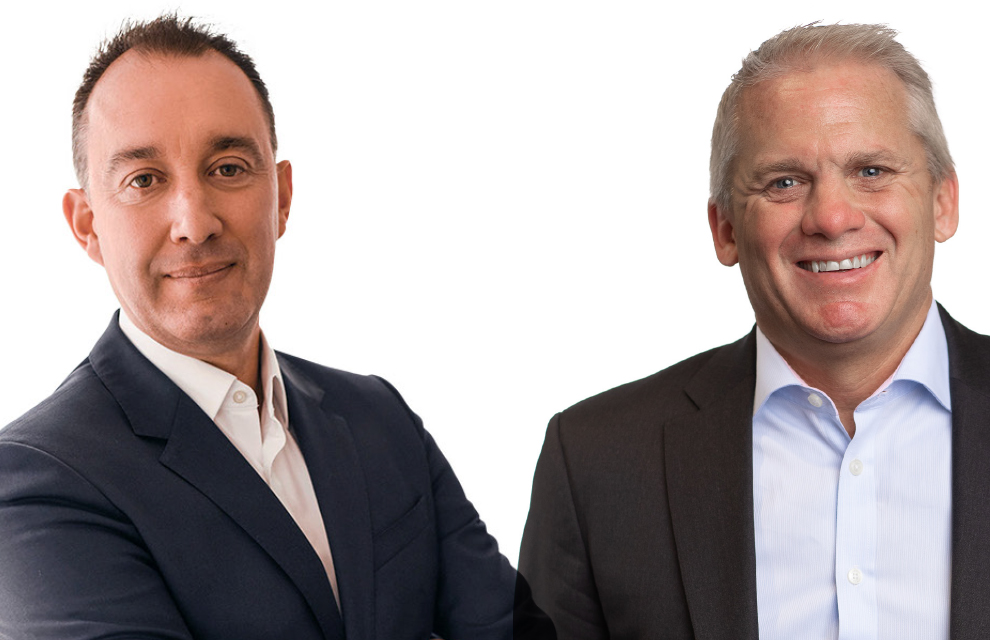Donal Gallagher CEO Quaternion
AcadiaSoft CEO Chris Walsh and Quaternion CEO Donal Gallagher discuss how their new joint entity brings a strong commitment to developing integrated risk management solutions that will help the industry navigate the many regulatory and cost challenges it faces
What does the acquisition of Quaternion mean for Acadiasoft’s clients?
Walsh: For AcadiaSoft clients, the Quaternion acquisition is mostly driven by the Uncleared Margin Rules (UMR), which entered the market in 2016. With phase five going live in September of this year, we are now seeing the impact on the buy-side. It requires our clients to transform in another way and calculate risk under new regulations. To do this, they need competencies that they haven’t had to invest in previously.
Our partnership with Quaternion reduces the burden on clients by delivering a risk solution that calculates their risk sensitivities and ultimately enables them to submit initial margin to their counterparties. We also realised our clients need a greater level of expertise and additional services. The more we saw this, the more we realised that including quantitative capabilities would be critical for our clients in the long-term. Once they have calculated risk, they need to start optimising it, so they are going to need these new competencies. The only way we could see ourselves providing that service was by moving beyond the partnership with Quaternion and joining together.
AcadiaSoft stated that the deal will bring “significant depth” to its risk product offerings, could you please elaborate on this?
Gallagher: The founders of Quaternion have been in risk management for over 20 years. We established Quaternion in 2010, working across the full range of risk, market risk, and counterparty credit risk. We initially started with the European banks and we quickly found ourselves working with the tier-one banks globally in their core market risk and counterparty credit risk. We rode that wave through all the regulatory changes that have come through in the past decade. From UMR and the changes in CSAs, CBAs, credit evaluation adjustment, to the interbank offered rate (IBOR) transition going on now, you name it, we have been working on it with our clients and developing software solutions.
Our strategy is unique in that we released the core risk engine, which does most of these things as an open-source project, as well as an open-source library on which you can run a small-to-medium-sized bank. You could run an entire industry by providing core risk calculations for capital and risk management. That’s really why we joined the AcadiaSoft family – we can combine the strengths and depth of Quaternion’s experience and our intellectual property, together with the technology capabilities, distribution, information security and client reach of AcadiaSoft. There’s very little we can’t do in terms of addressing the global market.
What have you achieved so far through your partnership?
Gallagher: What we have done so far in our partnership with AcadiaSoft is focus on UMR and UMR compliance; so we do the difficult task of back-testing which is a big challenge for many firms. Now that we have accumulated that resource, which is the golden data, and market data source, the open risk engine and proprietary risk engine, we are moving onto the core elements of risk capital. This includes things like the capital calculation, the SA-CCR or the standard approach to credit risk; all of the market risk measures and risk valuation. So we have an ability and can offer risk as a central service to the industry. That takes something very bespoke and specific to each institution and therefore costly, and centralises it so we can offer it as a service to the industry, which saves a huge amount of time and cost and is a real benefit to the industry overall.
Walsh: We’re offering risk as a central service to the entire industry. There are immediate services that will be coming out following the acquisition. A service will be coming out that will provide a mark-to-market variation margin calculation. Another service coming later this year will focus on CSA valuations, which will help gauge the economic impact when firms need to negotiate CSAs by helping clients estimate and calculate the financial impact of CSA changes when they go through the negotiation process.
The biggest achievement is the significant adoption of AcadiaSoft’s initial margin (IM) solutions for phase five clients that will go live in September of this year, more than half of which are using AcadiaSoft/Quaternion calculation services. We have around 120 clients using AcadiaSoft’s IM services. At least half of them are leveraging the calculation services that we put together with Quaternion. First and foremost, we have been able to help the market prepare for phase five together, and that’s what led to the position we are in right now. We have also been able to support clients with back-testing and validation for their calculations and offer that as a service. This has been really popular with clients and they loved the fact that we were able to offer capabilities that they didn’t have before thanks to the partnership. It then became a natural transition for us to take the next step forward in the relationship, which led to the acquisition.
What’s the timeline for internalisation?
Walsh: We have been working together for the past three years and we have developed an integrated platform jointly from the start, so the technical integration is complete. Right now, we are focused on our client needs and how we can help clients in an organised and integrated way. Those steps, such as integrating sales, and ensuring that we continue to provide a common service to our clients will be completed by the first quarter of this year.
The next step will be integrating the business. We are going to take the time to do this the right way, which will involve bringing people together in person once we return to business as usual.
Walsh: There was a lot of rescuing of firms following the crisis, but what’s shifted now is that we aren’t talking about rescuing anymore, it’s now about preventing it from ever happening again. I think embedding it in the infrastructure of the industry is the best way to ensure it doesn’t happen again and that’s what we are doing.
Can you share any more details your plans?
Walsh: We are embedding risk management into the infrastructure of the industry. We’re making ORE capabilities available as a service to all market participants. As we start bringing central calculations out to the markets – offering services to allow counterparties to prevent disputes from occurring across the market – we can leverage the calculation that underlines it to eliminate the disputes that surround the derivatives markets today.
There are several things that we are doing here, the number one being to make our capabilities available to all market participants going forward. We are hoping to offer services that will allow counterparties that trade to rely on common calculations, rather than them doing their own calculations. I think this is a huge step for the industry. By integrating risk into core derivatives processing infrastructure, we will create fundamental change across the industry.


